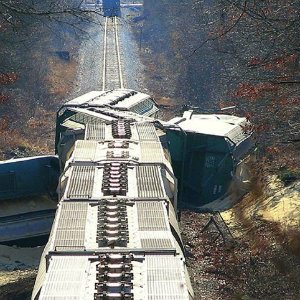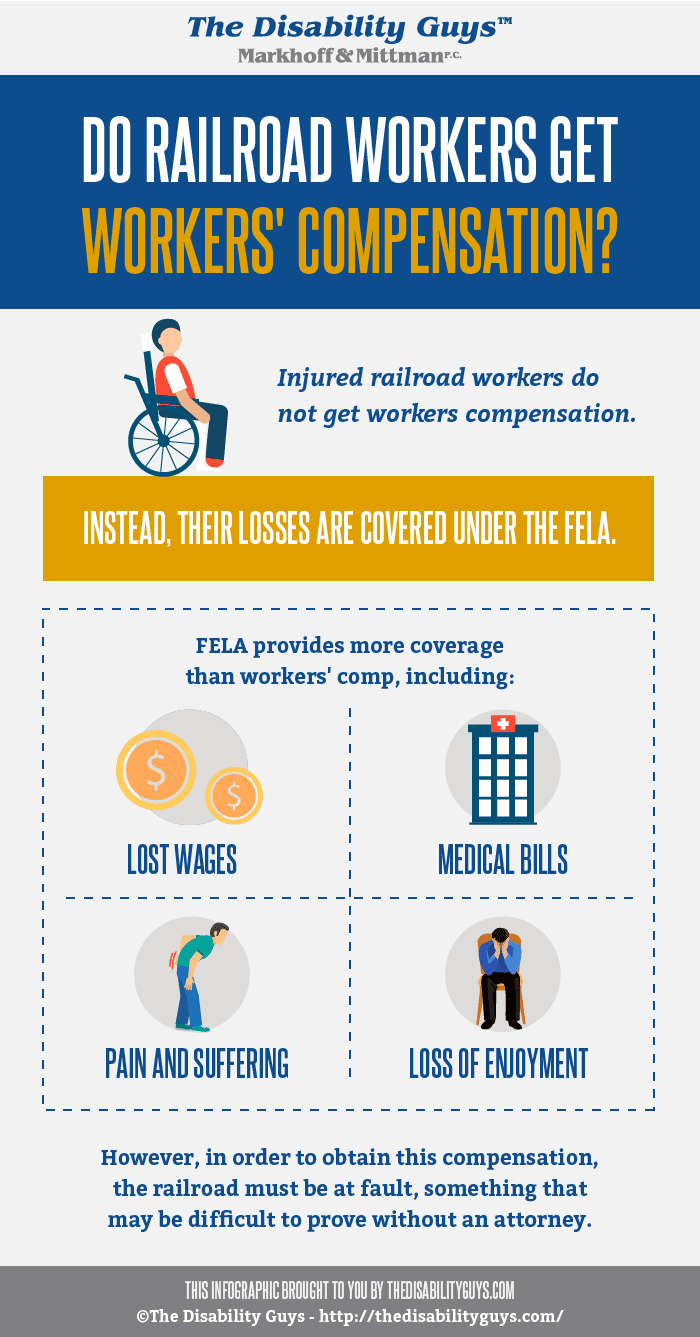No one goes to work expecting that at the end of the day, they will be hospitalized with serious injuries. Unfortunately, workers’ compensation insurance and other methods of employee compensation exist for a reason and claims are frequent, as seven employees of the Long Island Railroad found out on Saturday, October 8th.
A Sudden Derailment
It was around 9:10 p.m. and a commuter train carrying around 600 passengers was traveling eastbound on the LIRR. Unknown to those aboard, a work train was also traveling eastbound. Normally these two trains would pass one another in less than a minute without a thought, but sadly that’s not what happened on this particular evening.
The two trains collided, causing the first three cars of the commuter train to derail and sending people and bags flying through the air. While the cars did not tip over entirely, the damage was still substantial and rescue workers had to use ladders to get the victims out. A total of twenty-six passengers and five employees were injured.
Meanwhile, on the work train, a fire broke out and firefighters had to rush to put out the flames before a fuel line was breached. Two employees on this train were injured.
While a full investigation into the accident is still underway, a few things about what caused the trains to collide are known. According to initial reports, a mechanical tool on the work train was extended when it should have been retracted and it was this piece that hit the commuter train leaving a “splatter of yellow paint” on the side of the car. What isn’t clear is whether the unretracted part was due to human error or a defective product.
Injuries sustained varied from victim to victim and the most serious included numerous broken bones, lacerations, and crush injuries.
Immediate Response
U.S. Senator Charles Schumer announced that he will be pushing for the placement of cameras in all New York City metro areas, hoping that surveillance will help to prevent future accidents. Governor Cuomo also said he would be reviewing the results of the investigation to determine if any changes to safety regulations could be made.
Are The Workers Covered By Workers’ Comp?
Actually, railroad workers are NOT covered by workers’ compensation insurance. However, this does not mean that their injuries are not coverable. Railroad workers are covered by FELA, which stands for the Federal Employers’ Liability Act.
FELA typically provides complete coverage for an injured worker – sometimes even more than they would have obtained from a workers’ compensation claim. For example, the following losses can be paid under FELA:
- The full amount lost in earnings.
- Lost benefits.
- Medical expenses.
- Physical pain and suffering.
- Loss of enjoyment of life.
With workers’ compensation, medical expenses may be completely covered but the only other available compensation is a fraction of lost wages.
In order to obtain compensation, the railroad worker must fill out a Personal Injury Report. This report will ask questions like:
- Who was at fault for the accident which caused the injury?
- Was there something dangerous in the workplace which led to the accident?
- What was the timeline for the accident?
- What specifically caused the accident?
- Where there any tools or equipment involved in the accident?
- Could you have been more careful and prevented the accident?
It is extremely important to take care when you answer each of these questions because unlike workers’ compensation which provides coverage regardless of who was at fault, the FELA only pays out if the railroad’s negligence caused the worker’s injuries. That is because the railroad is responsible for providing a safe work environment, including the tracks, equipment available, walkways, and stations. They are also required to provide handbrakes, ladders, couplers, grab irons, and other safety equipment.
What If The Railroad Wasn’t Totally Negligent?
There is a contributory negligence section in the FELA which means that as long as the railroad was 1% negligent they still must pay a percentage to the injured worker. These cases are commonly resolved in court, where a judge or jury determines the percentage that each party was at fault. Then, any compensation given is reduced by the percentage that the injured worker was responsible for.
The Best Way To Ensure You Get What You Deserve
As soon as you are able after sustaining an injury at work, contact an attorney. While most people only think of hiring an attorney when they are going to file a lawsuit but that’s not all an attorney can do. They can also make sure that the Personal Injury Report is filled out in the best way possible, reminding the worker of what details should be provided to show the railroad was negligent. If a denial is received, an attorney can also guide an injured worker through the appeals process.
How To Find The Right Attorney
It is always important to find an attorney that is the right fit for you. When considering a firm, you may want to ask questions like:
- How much experience does the firm or attorney have with FELA railroad cases?
- What is the communication policy? Will you be contacted regularly with updates? How can you reach your attorney if you have questions about your case?
- What type of verdicts have been obtained for previous clients?
- Are they willing to explore other legal methods of obtaining compensation for their clients?
- Can they provide you with an estimate of how much everything will cost?
- What will you need to provide and how quickly?
Don’t be afraid to contact more than one firm so that you can compare responses.
Does The FELA Cover Injured Passengers?
No, the FELA only covers employees. The railroad company should have additional insurance to cover any injuries and losses that were sustained 
Many passengers will only able to get the full compensation they deserve by filing a personal injury lawsuit. This complaint is filed against the party whose negligence resulted in the injuries the victim sustained. The responsible party may not necessarily be the railway company – it could also be an independent contractor or even the manufacturer of the equipment which was not retracted.
How Long Does A Lawsuit Take?
Every lawsuit is different and there are many factors that could impact the amount of time that it takes for a lawsuit to reach its conclusion. Typically, the process of filing a lawsuit includes:
- Finding the right attorney.
- Filing the initial court papers.
- The discovery process where both sides collect evidence.
- Potential settlement negotiations.
- Trial if a resolution cannot be found.
Why Settle Instead Of Going To Trial?
There are certain benefits that are associated with accepting a settlement offer. Settlements are meant to not only provide the plaintiff with compensation but could also save the defendant money if it is likely they will lose by going to trial. It also can save a lot of time and ensure that the details of the case are kept private since court documents become public record. But that doesn’t mean that it is always the best option. An attorney can explain all of your options to you and answer any questions you may have.


